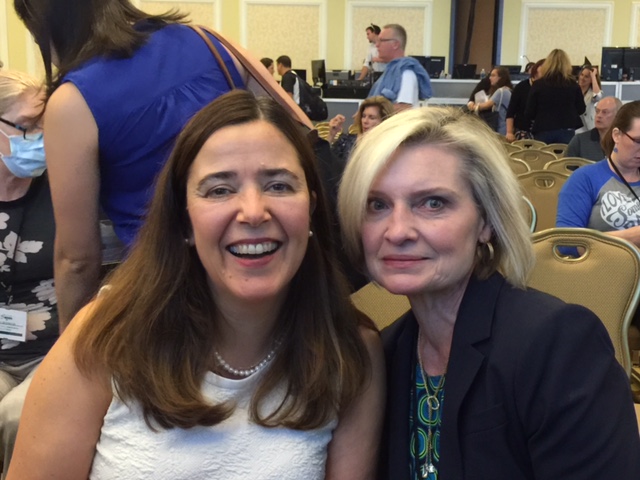You might assume that a summit dedicated to rare disease would be a negative experience, perhaps even bordering on tragic. You would be wrong.
The Global Genes RARE Patient Advocacy Summit held in Huntington Beach, California, on September 24-25 illustrates the positive energy that defines the rare disease community. Some people showed up in wheelchairs, while others had masks across their mouths and noses. One teenage girl brought her service dog, and one woman brought her oxygen tank.
While rare diseases create a seemingly endless variety of challenges, the summit participants all share the determination to help others and to leave no stone unturned to improve the lives of rare disease patients.
In terms of sheer altruism, the rare disease community may be the poster child for caring for others before self. Many know that the treatments they work for will not come in time to improve the quality of their or their loved ones’ lives, let alone save their lives…but they strive onward.
With the leadership and support of rare disease organizations like Global Genes and the EveryLife Foundation, as well as single disease organizations like the BDSRA (Batten Disease Support & Research Association), advocates across the country are making a difference:
- Emily’s Entourage is racing to find treatments for cystic fibrosis before their namesake’s lungs completely fail.
- The teens of We Are More are showing that young people who live with a rare disease are living their lives.
- The Turner Syndrome Global Alliance is engaging Kansas City.
- Utah Rare is galvanizing an entire state.
- North Carolina is creating a national model for policy activism via its state-based N.C. Advisory Council on Rare Diseases.
The patients, their families and other advocates are joined in this crusade by scientists and healthcare providers who dedicate their careers to finding treatments that will ease the suffering of their patients and ultimately, to discovering the cures that will forever end the scourge of rare diseases.
The progress is steady, if excruciatingly slow. In July, the ALS Association stated that thanks to research funded by its Ice Bucket Challenge, a new ALS gene has been discovered, providing scientists with another potential target for therapy development. Just a week before the summit, the FDA granted accelerated approval for Exondys 51, the first drug to treat Duchenne muscular dystrophy.
And the Batten disease community, including Taylor’s Tale, cheered the announcement on September 21 that Abeona Therapeutics has licensed the AAV gene therapy platform developed at the University of North Carolina at Chapel Hill. This platform adds ABO-202, an AAV-based CLN1 program, to the company’s Batten disease treatment pipeline.
The real news for Batten disease patients is that this treatment is anticipated to enter clinical trials in 2017 for patients with the infantile form of Batten disease, which affects children like Taylor King around the world. The AAV platform was developed in the UNC lab of Steven Gray, Ph.D., with the financial support of Taylor’s Tale and other Batten disease organizations – all founded by families like the King family.
The participants at the Global Genes RARE Patient Advocacy Summit celebrated their peers and this recent good news. In the meantime, they learned more about human genome discoveries, new technologies like 3D bioprinting, advances in precision medicine and even the amazing possibilities for treatment development that can be realized from the power of big data.
As Petra Kaufmann, M.D., M.Sc., expressed during her presentation to the summit, we must collaborate as well as leverage the potential of technology to accelerate the development of rare disease treatments. As clinical innovation director of the National Center for Advancing Translational Sciences at the National Institutes of Health, Dr. Kaufmann is a leading voice in the rare disease community and an ambassador for the NIH’s theme, Turning Discovery Into Health.
The Global Genes RARE Patient Advocacy Summit assumes that many voices united in a common cause can and will:
- Lead to treatments for the 95 percent of rare diseases that currently do not have one.
- Dramatically improve the lives of 350 million rare disease patients worldwide.
That’s an assumption we can and must count on.

